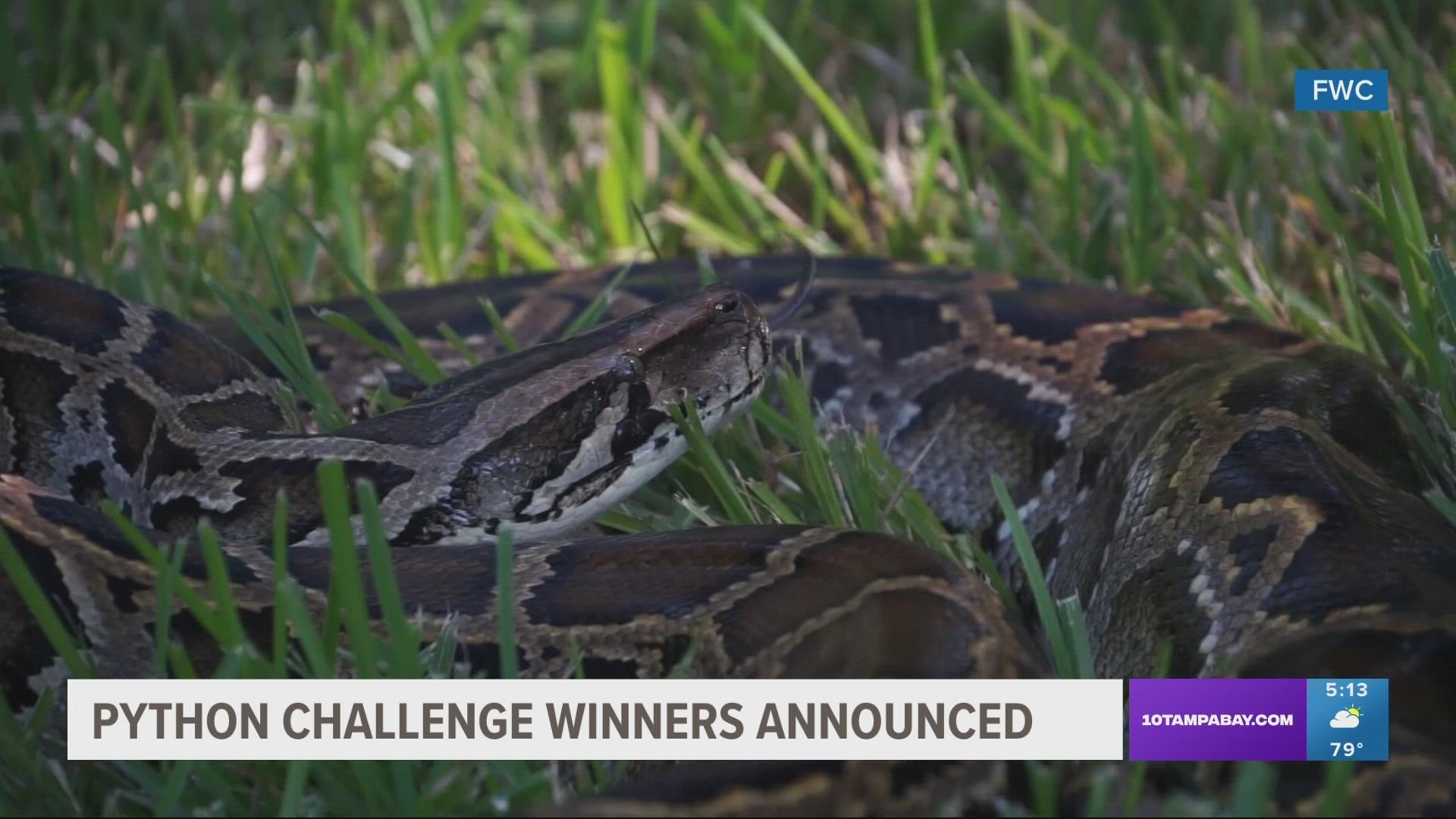EVERGLADES CITY, Fla. — For more than two decades, Florida wildlife officials have struggled to get the invasive Burmese python population under control.
The state even hosts the annual Florida Python Challenge with thousands of dollars in prizes for whoever bags the most snakes.
Despite natural predators like bobcats, eagles and alligators — and, of course, several human efforts over the years — scientists have found that Burmese pythons are continuing to spread out across South Florida and becoming harder to track along the way.
Researchers from the United States Geological Study recently did a comprehensive analysis of everything we've learned about behavior and control tactics since the pesky snakes first slithered their way into the Everglades in the 90s.
"For the first time, all the science on python ecology and potential control tools has been consolidated into one document, allowing us to identify knowledge gaps and important research areas to help inform future python management strategies," USGS Ecologist Jacquelyn Guzy said.
Here's what the study found.
Although records of a Burmese python spotting in the Everglades date back to 1912, researchers found that the snakes didn't establish a breeding population in the national park until 2000.
Because the snakes are native to Southeast Asia, it's believed that exotic pet traders used to buy and sell them in the Miami area and owners who no longer wanted them released them into the Everglades, according to Smithsonian.
Now, the pythons occupy most of southern Florida, encompassing more than 11,000 square miles from Lake Okeechobee throughout Palm Beach County, south through Miami-Dade County to Key Largo, and west throughout Monroe, Collier, Hendry and Lee Counties, the study says.
But, there is one big problem with gathering data — the slithering reptiles are hard to track down. According to Guzy, pythons occupy vast stretches of inaccessible habitats, camouflage extremely well in Florida's environment and don't readily enter any type of trap.
So, most of the data is based on observations submitted by python researchers, land managers and the public. Understandably, these sightings are biased towards accessible areas like roads.
Historically, the python's elusive nature has made it difficult for researchers to understand what population control tactics they need to take. Now that we have a better understanding of how far they've traveled, the study concluded that "eradication of the population across the landscape is not possible with existing tools."
Burmese pythons pose a threat to Florida's natural species and ecosystems, eating 76 different species from mammals and birds to alligators and iguanas.
For the future, researchers are exploring potential techniques such as genetic biocontrol, "that may one day provide an avenue towards larger-scale population suppression."

